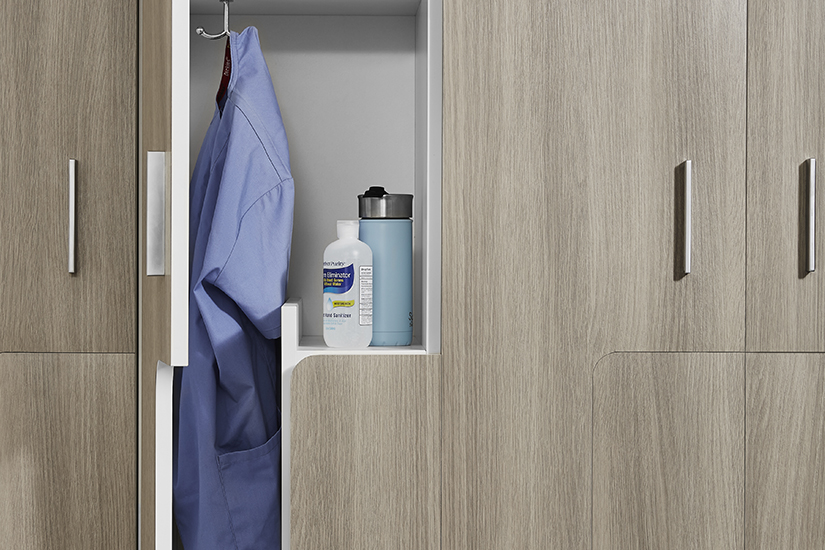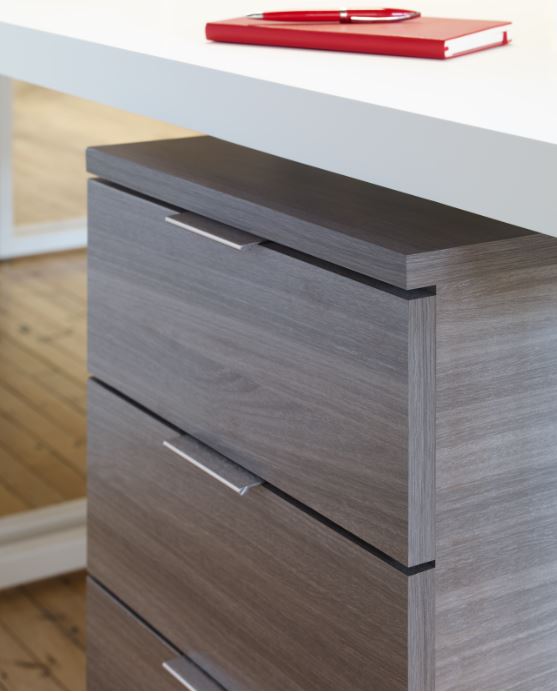HPL and TFL: Understanding the Differences
HPL and TFL: Understanding the Differences
This Q&A will help you understand how high pressure laminate and thermally fused laminate differ, and where each works best for interior surfacing.

HPL vs. TFL
There’s been some buzz in the industry lately regarding the differences between high pressure laminate (HPL) and thermally fused laminate (TFL). From a performance standpoint, these two options aren’t equal, and it’s important to understand how to select the right one for client projects.
What is high pressure laminate (HPL)?
High pressure laminate (HPL) is specifically engineered for both horizontal and vertical applications due to its durability and impact resistance. HPL is made from multiple layers — surface papers treated with melamine resin and core kraft papers treated with phenolic resin. These are fused together under high temperature and pressure to become a thermoset laminate sheet, which is then applied to a substrate like MDF.

What are the benefits of HPL?
HPL’s multi-layer composition generates category-best scratch, wear and impact resistance. It can also be postformed to add flexibility in design and is easy to clean. Formica® high pressure laminate sheets have low minimum order quantities and fast lead times to help designers keep projects on track.
What is thermally fused laminate (TFL)?
TFL is a value-engineered alternative to HPL in some vertical applications. This decorative paper is treated with melamine resins and pressed directly to a substrate. It’s often used on cabinets and office furniture. TFL has significantly lower scratch, wear and impact resistance versus HPL.

What are the benefits of TFL?
TFL is a true value play. It’s a good choice when durability isn’t a major concern, and budgets are tight.
When should HPL and TFL be used?
HPL should be used when a durable, high-performance surface is needed. It is also the only choice if postforming is required. HPL has a shorter lead time and much smaller minimum order quantities compared to TFL, making project timelines a factor in decision-making.TFL can be used to replace wood veneers and other surface materials in low-traffic areas where scratch- and impact-resistance isn’t a key factor.



